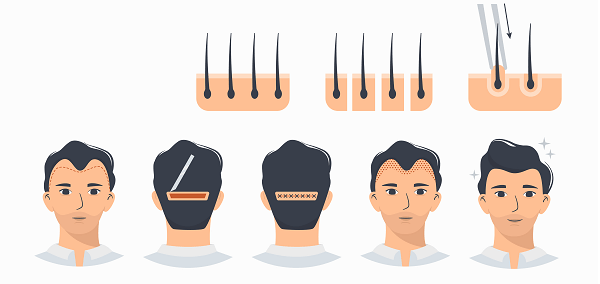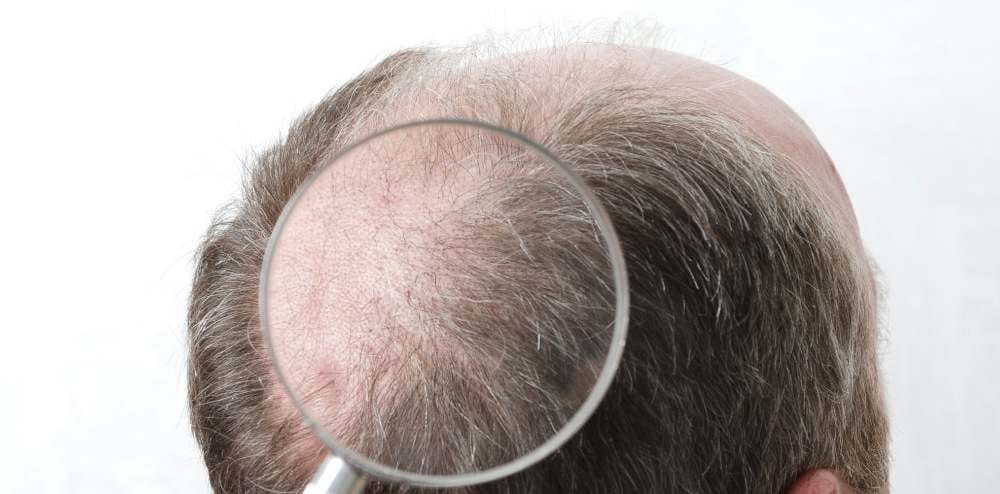When we look at the hair transplant methods, we first see the following three methods.
These are called Follicular Unit Transection [FUT], Follicular Unit Extraction [FUE] and Direct Hair Implantation [DHI].
When we look at the basic elements of these methods even if are the same, the FUT method, it is known as the Gold Standard in the world. Other methods have been developed based on the basic principle of the FUT method in areas such as anesthesia, the healing process and patient comfort. In fact, all three methods have advantages and disadvantages over each other. The method used depends on the patient’s own decision, as well as the doctor’s.

1) FUT METHOD
Although the FUT technique, which is the oldest known technique, is more commonly called the strip method. In FUT hair transplant, the hair is not shaved, since the hair follicles that will be transplanted will be removed from the donor by extracting the hair follicles together with the skin, and local anesthesia is applied to this area.
Since the FUT technique is performed with a surgical operation, a suture must necessarily be applied to the incision site. After the strips are cut into pieces, they are placed in the hair recipient area. 1 week after the procedure, it is necessary to remove the donor area stitches.

2) FUE METHOD
FUE technique is the most preferred hair transplant technique. It has been the most preferred method because it provides a natural appearance when it is done by experts. In the fue method, the hair follicles are removed one by one from the donor area with a special fue device without any cuts, permanent scars, wounds, etc.
The FUE technique is first started by cutting the hair. This procedure is performed using local anesthesia.

PROS OF THE FUE METHOD OVER THE FUT METHOD
The most obvious and important advantage of the FUE method is that there is not much bleeding because the incision is not made as in the FUT technique.
A haircut is made in the FUE technique, but not in the FUT technique.
In the FUE method, not only the temporal parts of the scalp, but also other alternative areas such as the beard, chest, and legs can be used as donors.
After the procedure performed in the FUE technique, no traces remain.
In the FUE technique, no suture is required in the donor area, but in the FUT technique, the suture is sutured because an incision is made in the donor area.
CONS OF THE FUE METHOD
- If an inexperienced doctor performed the surgery or if the tools are used improperly it can have negative side effects.
- Patients who are not informed about the method or are not sufficiently enlightened about what to do before and after surgery and patients who do not follow the doctor’s instructions can harm the grafts if they act carelessly.
- Patients with unrealistic expectations and patients who need high volume instead natural results can be unsatisfied with the end result.

3) DIRECT HAIR IMPLANTATION (DHI)
Besides the two most well-known application methods, the third is also known as direct hair implantation. In this method, the hair follicles are collected with the help of a medical pen called Choi, which only specialists should use, and then the hair taken with this pen is placed directly on the skin without making an incision or opening any hair channels.
PROS OF THE DHI METHOD
- Simultaneous grooving and hair follicle placement allows you to place the collected hair follicles in place without waiting for a long time.
- Provides a more natural appearance.
- Due to its special apparatus, the waiting time of the grafts during hair transplant is reduced. Thus, the risk of graft loss is minimized.
- Current hair is not damaged or cut off. It is also a method that can be applied in patients who have partial hair loss.
CONS OF THE DHI METHOD
- In order to use and master this method in the best way, the doctor and his/her team must go through a long training process.
- Because the area will be narrow when transplantation to the hair area, Choi Pens may damage other hair follicles when working in this narrow area.







